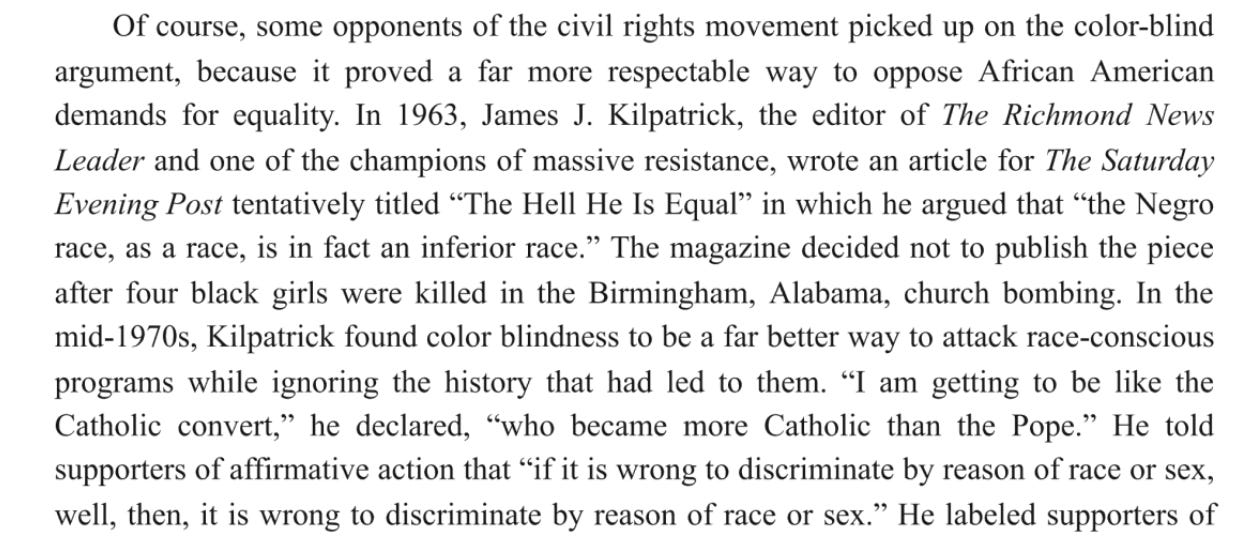With today’s stunning decision outlawing race-conscious affirmative action policies at universities, Chief Justice John Roberts has completed a long conservative crusade.
Sweeping aside the historical evidence that shows the Constitution has never been “colorblind” and that affirmative action programs were intended and have been proven to work, as the dissents in the case remind us, to promote racial equality in this nation, Roberts has instead long rested his thinking here on a simple, if not simplistic, line.
“The way to stop discriminating on the basis of race,” he quipped in a 2007 decision, “is to stop discriminating on the basis of race.”
If that sounds a little too cute and a little bit insincere, that’s because it is.
As other scholars have long noted, a paraphrase of that principle — and the larger idea of a “colorblind” Constitution — was advanced in the 1970s by former segregationists who had long insisted they did not believe in racial equality but who were nevertheless willing to invoke it to attack affirmative action.
Here’s the noted legal historian Melvin Urofsky on segregationist James J. Kilpatrick:
It wasn’t a sincere argument then. I don’t think it is now.






Today's SCOTUS ruling on affirmative action makes 1 thing clear: people who freely critique the US for not living up to its ideals, are the people who most support and defend those ideals.
People like the SCOTUS majority are the ones who most denigrate and degrade those ideals.
The “thinking” upon which Roberts’ reasoning relies comes not from his prefrontal cortex, but from his amygdala. He employs his critical thinking to rationalize his darker impulses.